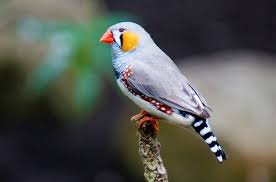Birds are one of the most diverse and visually stunning groups of animals on the planet, characterized by their feathers, beaks, and ability to fly, although some species are flightless. This class of warm-blooded vertebrates, known scientifically as Aves, includes over 10,000 species, making it a fascinating area of study in the animal kingdom. The evolutionary history of birds can be traced back to the late Jurassic period, where they are believed to have descended from theropod dinosaurs. This connection is evident in many physical traits, including their skeletal structure and certain behaviors. Birds exhibit a remarkable array of adaptations that enable them to thrive in nearly every environment on Earth, from the icy tundra to the lush tropics and arid deserts. The defining feature of birds is their feathers, which serve multiple purposes beyond flight. Feathers provide insulation, allowing birds to maintain their body temperature, and play critical roles in mating displays, camouflage, and waterproofing. The vibrant plumage of species like the peacock or the scarlet macaw is not only visually striking but also serves as a signal for attracting mates and establishing territory. The lightweight skeleton of birds is another adaptation that facilitates flight. Their bones are hollow and filled with air sacs, reducing overall weight without sacrificing strength. Coupled with powerful muscles and a highly efficient respiratory system, birds are capable of incredible feats of aerial maneuverability and endurance. For instance, the peregrine falcon is renowned for its speed, diving at over 240 miles per hour to catch prey in mid-air, while migratory species like the arctic tern travel thousands of miles annually between breeding and feeding grounds, showcasing extraordinary endurance and navigational skills. Birds have evolved various feeding adaptations that reflect their diets and ecological niches. From the long, probing beaks of hummingbirds designed for extracting nectar from flowers to the strong, hooked beaks of raptors for tearing flesh, the diversity in beak shape and size is astonishing. Herbivorous birds, such as finches and pigeons, have evolved to have stout, conical beaks that can crack seeds and nuts, while shorebirds like sandpipers possess long, slender bills ideal for probing mud for invertebrates. Birds also exhibit fascinating social behaviors, with many species forming complex social structures. Some birds, like crows and parrots, are highly intelligent and capable of using tools, solving problems, and even mimicking human speech. Their social interactions can involve intricate communication through calls, songs, and body language, enabling them to convey messages about food sources, danger, and mating opportunities. For instance, songbirds have developed elaborate mating songs that serve both to attract partners and to establish territory. Nesting behaviors in birds are equally diverse, ranging from elaborate structures built in trees to simple scrapes on the ground. Some species exhibit remarkable parental care, with both parents taking active roles in raising their young, while others, like many shorebirds, provide minimal care after laying eggs. The reproductive strategies of birds are diverse, with most species laying eggs that require incubation. The coloration and patterns of eggs can vary widely, often serving as camouflage to protect against predators. Migration is one of the most extraordinary phenomena in the avian world. Many birds undertake long-distance migrations to take advantage of seasonal resources, escaping harsh winter conditions or seeking optimal breeding grounds. For example, the annual migration of the monarch butterfly is well-documented, but many bird species, such as the black-capped chickadee, follow similar routes, traveling thousands of miles to and from their breeding grounds. This instinctual behavior is a remarkable adaptation that ensures survival in changing environments. However, migration poses significant challenges, including the need for precise navigation and the dangers of predation, habitat loss, and climate change. Sadly, birds face numerous threats in the modern world, with habitat destruction, pollution, climate change, and hunting contributing to declining populations of many species. Organizations dedicated to avian conservation work tirelessly to protect these creatures and their habitats. Initiatives such as creating protected areas, restoring wetlands, and advocating for sustainable practices are crucial in preserving bird populations and their ecosystems. Birdwatching has become a popular hobby and conservation tool, as enthusiasts engage in monitoring populations and supporting local conservation efforts. Public education and outreach play vital roles in fostering appreciation for birds and the need for their conservation. Through initiatives like the Audubon Society’s Christmas Bird Count and citizen science projects, individuals can contribute valuable data that informs conservation strategies and helps protect bird species at risk. In addition to their ecological importance, birds have captured the human imagination throughout history. They feature prominently in art, literature, and cultural traditions, often symbolizing freedom, beauty, and the interconnectedness of nature. From the ancient Egyptians, who revered birds like the ibis, to modern-day conservation efforts celebrating the diversity of avian life, birds continue to inspire and captivate people around the world. The presence of birds in our ecosystems signifies healthy habitats and biodiversity, making their protection paramount for ecological balance. As stewards of the environment, it is our responsibility to ensure that future generations can enjoy the beauty and wonder of birds in their natural habitats. By supporting conservation efforts, fostering awareness, and engaging in responsible practices, we can help protect these feathered wonders and the ecosystems they inhabit. In conclusion, birds are a remarkable group of animals that have evolved a wide array of adaptations, behaviors, and social structures. Their ability to fly, vibrant plumage, and complex social interactions make them not only a vital part of our ecosystems but also a source of inspiration and fascination for people everywhere. Understanding and appreciating the diversity of birds and their roles in the environment is essential for promoting conservation and ensuring their survival for generations to come.
